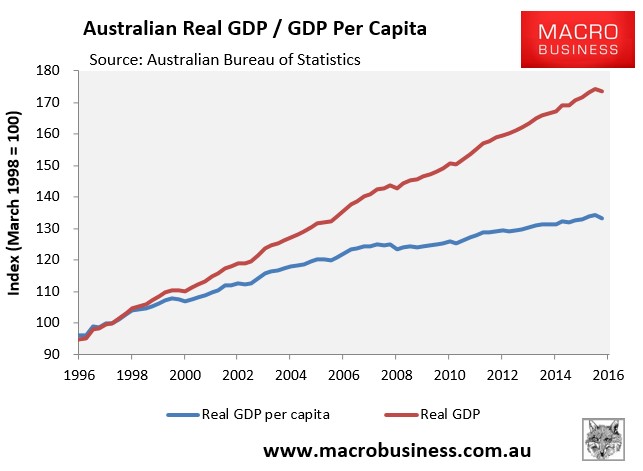Declines in the rate of population growth are nothing new. It has been in decline throughout the West for several decades. In some countries in Europe, the rate of growth is below replacement levels: The population, in other words, is set to experience a decline in absolute numbers. But the U.S. has also been on a downward trajectory since the 1990s, though the pace has been less steep. The latest figures for the rate of population growth compare with 1.4 percent in 1994 and more than 2 percent at the height of the baby boom.
Since the industrial revolution and indeed the post WW2 baby boom, these declines in natural fertility are part of a very long term trend as economies urbanise and create smaller families amid greater birth control and rights for women. None of these declines were the cause of lower economic growth, rather were paralleled by huge growth as Western economies prospered.
The question raised if can the decline in population growth can pull economic growth to deflationary levels, and the answer might be found in Japan although the trends (and use of GDP as a proper indicator of growth) are still very similar:
Or in the historical record:
One particularly intriguing study, by the Canadian economist Clarence Barber, traced the relationship between declines in the rate of population growth and the eventual onset of the Great Depression. He observed that during the 1920s, in the years preceding the 1929 crash, the rate of population growth had fallen by approximately a third in western and northern Europe and by half in the United States.
In all likelihood, this decline was owed to the growing secularization of society at this time, and in particular, the growing opportunities for women outside of traditional gender roles– not to the collective trauma of World War I. These new mores went hand in hand with sharp declines in the formation of new households, as younger people put off marriage and childbearing. This trend, or what Barber described as a “rapid and very large decline in the rate of growth of non-farm households,” led to a dramatic decline in residential construction starting around 1926.
The recent data on population growth marks an ominous return to a trough last seen during the Great Depression. Moreover, data released by the real estate firm Trulia last week indicates that the number of young people living with their parents (or siblings) recently hit levels not seen since 1940.
Which leads us to the other side of the coin, and an area economists and demographers in Australia need to watch closely, given the uneasy rise in anti-immigration sentiment. Can boundless immigration continue to be used to prop up an economy that requires constant growth to prop up its housing ponzi? Which begs the greater question – what if the immigrants don’t come to fill the gap?
And before the economy slows to that critical point where immigrants don’t want to arrive as employment opportunities disappear, what if politicians decide to stop the floodgates, either by building ridiculous – no wait, fantastic, huge walls or exile”illegal” immigrants and their natural born families? This is a genuine possibility in the United States and Brexit may also provide that impetus in the old Country, but what about Australia?
While nominally xenophobic, Australians are hopelessly addicted to immigration to prop up its fragile economy. Paradoxically, the rise of One Nation and other more reasoned arguments against non-refugee immigration are widening in the general community, but nowhere in the halls of Parliament.
And perhaps until GDP per capita flattens completely will we see any attempt of getting of the population ponzi high:
